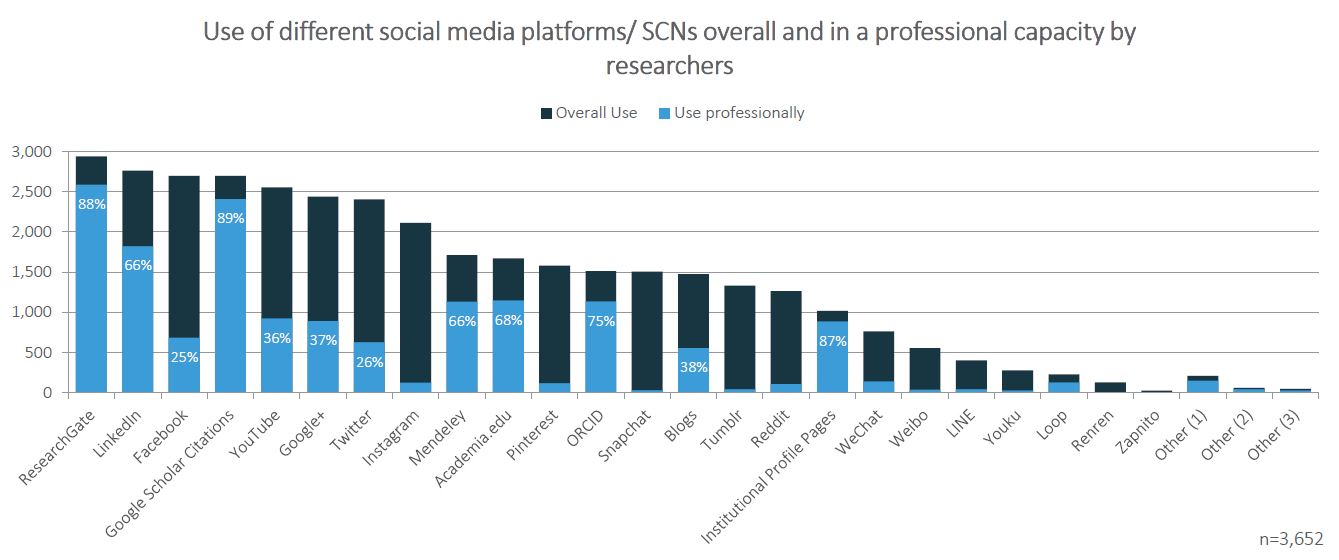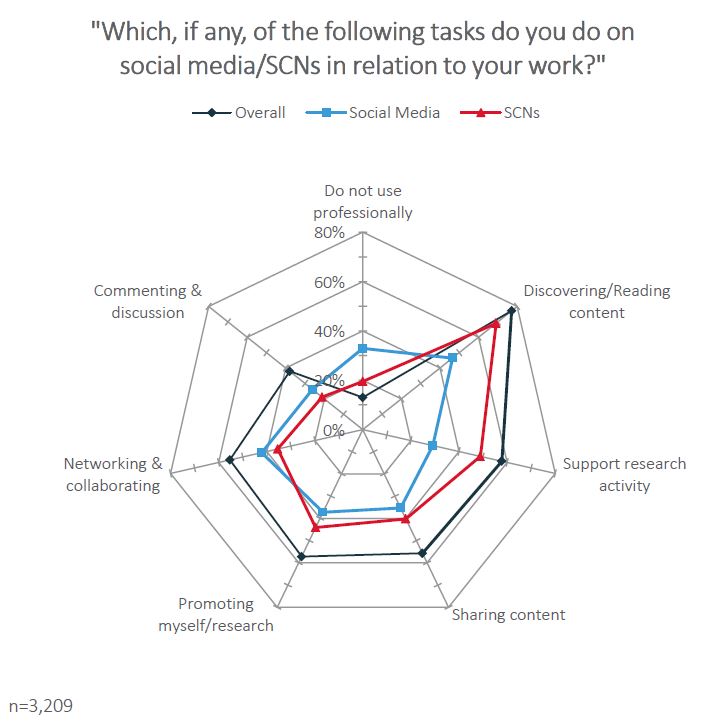
Written by Tina Harseim, Head of Social Media, Springer Nature and Gregory Goodey, Research Analyst, Springer Nature.
The data from this survey has been made open access for anyone who would like to use it. You can find it on Figshare.
Social media is not only a way for authors and publishers to disseminate research findings, it’s also increasingly being used by researchers to discover and read scientific content.
To better understand how social media and scholarly collaboration networks (SCNs) are used within academia to support research activity, Springer Nature conducted a survey in February. This was in follow up to a Nature survey carried out in 2014. (The original survey can be found here: Online collaboration: Scientists and the social network)
Over 3,000 researchers from STM and HSS fields (humanities and social sciences) completed the survey, though numerically dominated by STM respondents (89%). Researchers covering all career levels gave us their views, with the largest groups of respondents from Europe (33%), the Americas (31%) and Asia (31%).
The survey revealed researchers’ views on their professional use of social media and SCNs, to what extent it can help them in their work, and the role publishers and journals can play to support researchers with activity on these platforms.
All data is available to view and download on Figshare, along with a summary of the key findings.
These include:
- Over 95% of respondents said they used some form of social media or SCNs for professional purposes
- ResearchGate was the platform with the greatest proportion of professional users (71%), followed by Google Scholar (66%)
- While respondents stated they used SCNs in high numbers, frequency of use, and therefore platform engagement, was reported to be higher for social media
- 50% of professional users said they accessed Facebook on a daily basis

- In the Nature survey conducted in 2014, the most-selected activity on both ResearchGate and Academia.edu was simply maintaining a profile in case someone wanted to get in touch (68%). This year’s survey revealed that the research activity that over three quarters of respondents stated that they use social media and SCNs for was discovering and / or reading scientific content (Nature’s 2014 study 33%)
- 57% of respondents to the survey used some form of social media and /or SCNs to support with self or research promotion
- Therefore, unsurprisingly, the content that the majority of researchers appreciate from publishers is information on new topics and trends; and research relevant to their field and article recommendations
- Over 80% of respondents would also expect to some degree that any research of content provided by the publisher / journal on these sites should be openly accessible

The survey enables us to provide the best service for our authors, and keeps us close to the views of our community. Over 70% of respondents did agree that they felt that they should do more to promote their research using social media / SCNs.
A significantly higher proportion of Twitter and Facebook professional users share scientific content than any other social media platform or SCN. This gives us confidence that SharedIt, Springer Nature’s content sharing initiative, is offering the functionalities that our users need.
We will use these results to support our approach to social media, discussions on the value SCNs provide for researchers, and how we can best shape our services to meet the needs of the academic community.
Comments